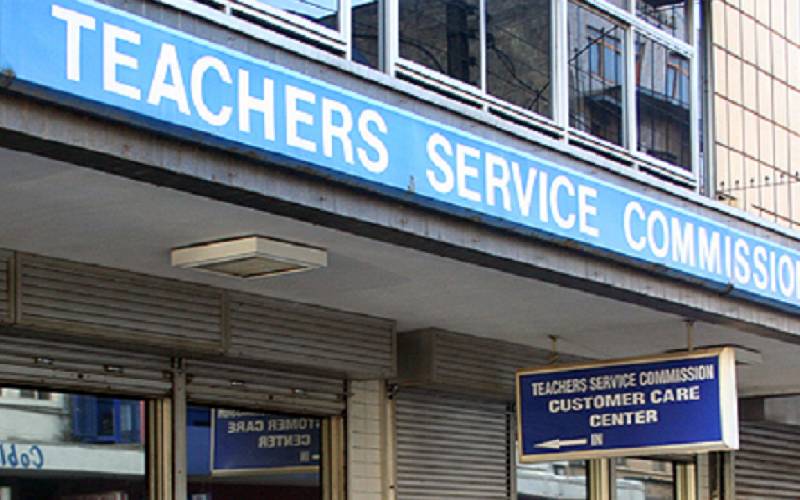
Cancer constitutes a majority of overseas treatment for teachers, according to a status report of the tutors’ medical scheme cover.
The overseas treatment incidence rates lists heart and kidney diseases, spinal column, leukaemia, neurosurgery, liver disease, aneurysm, hip replacement and hearing loss among the key cases.
The details are contained in an internal report recorded during the past four years.
The document, Teachers’ Medical Scheme Report seen by The Standard, reveals that a majority of teachers who sought In Vitro Fertilisation (IVF) are below the age of 35.
According to the report, out of 35 IVF procedures done, 14 were successful.
At least 1,269 children are born every month under the multi-billion-shilling teachers’ medical scheme.
A status report of the teachers’ medical scheme cover for the past four years shows that a total of 55,851 babies have been born since the scheme was rolled out.
The highest number of births was recorded in the year 2015/2016 with some 26,141 children born.
During 2016/2017 year, 15,729 babies were born with 11,609 births recorded in 2017/2018.
This year has recorded the lowest number of births so far with only 2,372 children born by end of February.
A total of 515,068 children have been listed as beneficiaries under the scheme. Overall, a total of 1,006,673 have benefited from the annual Sh6 billion medical scheme so far.
Of these, 313,333 are teachers – principal members – with 178,272 listed as spouses.
For the last four years, the scheme data reveals that the total outpatient and inpatient costs stands at Sh26.1 billion.
Inpatient benefits range from Sh500,000 to Sh1.5 million based on job groups, while outpatient is unlimited.
Optical and dental covers range from Sh10,000 to Sh25,000 based on job groups while maternity fee is a flat rate of Sh75,000.
The common ailments listed under the scheme are malaria, pneumonia, gastritis, fracture, gastro enteritis, septicaemia, anaemia, peptic ulcer disease, hypertension and tonsillitis.
Report shows that fractures are the most expensive ailment on the scheme consuming six per cent of total costs.
Malaria is the most common ailment on the scheme with more cases reported followed closely by Pneumonitis, Anaemia and Gastritis.
Finer details, however, reveal that outpatient cost alone for the past four years stands at Sh13.3 billion with a total of 7.1 million visits.
This means that an average of 141,944 monthly visits by teachers – who are the principal members – and their beneficiaries.
During outpatient visits, teachers and the scheme beneficiaries also access dental, optical and maternity services.
A total of 219,966 dental visits have been conducted over the past four years translating to some 5,978 visits per month.
And 303,624 spectacles have been issued, translating to 6,463 spectacles issued per month. The highest outpatient cost was recorded during the 2017/2018 when 1.7 beneficiaries visited the hospital and some Sh3.9 billion paid.
The year 2015/2016 however recorded the highest outpatient visits of 2.4 million by end of February, with a cost of Sh3.8 billion cost.
Teachers and their beneficiaries also consumed Sh3.4 billion under 2016/2017 financial year with 2.1 million visits recorded.
And by end of February this year, some Sh2 billion have been spent so far with 709,717 visits recorded.
Under the inpatient cover, the scheme has so far spent a total of Sh12.9 billion with a total of 127, 897 admissions for the last four years.
This translates to a monthly admission of about 5, 367.
Scheme data shows that the highest cost was incurred during the 2016/2017 financial year with some Sh4.1 billion paid for 34,473 admissions.
Some Sh3.6 billion was paid towards 43, 070 patients admitted during 2017/2018 financial year.
Another 28,473 admissions undertaken during the 2015/2016 financial year attracted a coat of Sh2.7 billion. And this year, some Sh2.5 billion has already been paid towards 21,881 admissions.
Scheme data also shows that on average, some 62 cases of evacuations are handled with 246 cases managed for the last four years.
“Most of the cases are referred to India where specialised treatment is not available locally. Diagnostics that we evacuate include and not limited to Transplants, PET Scans, Cancer, Cardiac diseases, Brain and Spinal disorders,” reads the report.
The highest evacuation situations were recorded during the 2017/2018 financial year with 80 cases recorded. 68 cases were recorded during the 2015/2016 financial year with 57 cases noted in 2016/2017. By end of February this year, only 41 cases had been handled.
And on last expense claims, the scheme registered 4,066 cases with some Sh406 million paid during the four-year period.
 The Standard Group Plc is a multi-media organization with investments in media
platforms spanning newspaper print operations, television, radio broadcasting,
digital and online services. The Standard Group is recognized as a leading
multi-media house in Kenya with a key influence in matters of national and
international interest.
The Standard Group Plc is a multi-media organization with investments in media
platforms spanning newspaper print operations, television, radio broadcasting,
digital and online services. The Standard Group is recognized as a leading
multi-media house in Kenya with a key influence in matters of national and
international interest.
 The Standard Group Plc is a multi-media organization with investments in media
platforms spanning newspaper print operations, television, radio broadcasting,
digital and online services. The Standard Group is recognized as a leading
multi-media house in Kenya with a key influence in matters of national and
international interest.
The Standard Group Plc is a multi-media organization with investments in media
platforms spanning newspaper print operations, television, radio broadcasting,
digital and online services. The Standard Group is recognized as a leading
multi-media house in Kenya with a key influence in matters of national and
international interest.










